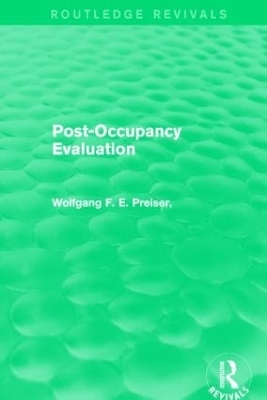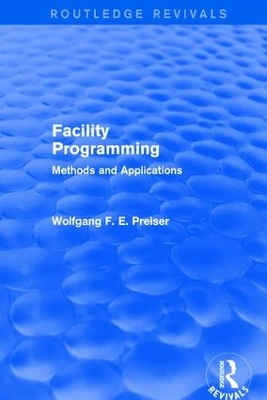Routledge Revivals
3 total works
Post-Occupancy Evaluation (Routledge Revivals)
by Wolfgang F. E. Preiser and Harvey Rabinowitz
Post-occupancy evaluation, focusing on building’s occupants and their needs, provides insight into the consequences of past design decisions and forms a sound basis for creating better buildings in the future.
This book, first published in 1988, includes a review of the evolution of the field, a conceptual frame-work for POE, and pragmatic information on planning, conducting, and reporting POEs. Post-Occupancy Evaluation categorizes the approaches to building evaluation by describing the three levels of POE effort – indicative, investigative, and diagnostic, each differing in terms of time, resources, and personnel needed.
In its scope Post-Occupancy Evaluation is both comprehensive and specific; professionals in the design and planning disciplines will find it an invaluable resource for understanding the theory behind POE’s and the procedures needed to put the theory into practice.
First published in 1978, the objective of this book is to provide an authoritative and selective overview of current, user-orientated programming methods within the field of environmental design. The 19 chapters compiled in this volume describe procedures and the information content of innovative approaches used by leading programming experts in the private and institutional sectors. Emphasis is placed on a qualitative and illustrative focus of selected approaches to environmental programming with the eventual occupants in mind. The chapter groupings are intended to reflect three major areas of professional engagement that serve the field of facility programming. The first group describe the approaches of firms or groups that were organised exclusively to provide environmental analysis and programming services. Part II is composed of chapters by authors who belong to established architectural firms with programming departments and Part III presents evidence that pertains to the supporting role of research and guidance literature from authors primarily affiliated with government agencies or supported by large organisations.
This book should make readers more aware of problems in architectural interiors and of ways to make interiors work better for the building occupants.Features-- Brings a unique perspective to this important building type-- Applies a user-based and scientific approach to evaluate the interior design of fifteen schools of design-- Many of the findings for these interiors extend to all kinds of spaces on campus and elsewhere-- Offers guidelines for designs of the future


